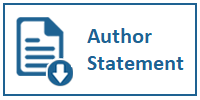Comparison of Monopoly and Sharing Line-haul Vehicles in Express Delivery Service
DOI:
https://doi.org/10.31937/si.v6i1.280Abstract
In the Korean express delivery service market, many companies have been striving to extend their own market share and interested in collaboration through sharing resources such as line-haul vehicles and service centers. Collaboration has recently attracted a great deal of attention as an effective way to secure competitive advantage for companies with limited resources. Some companies operate line-haul vehicles in milk-run types of pick-up and delivery services among consolidation terminals and service centers with locational disadvantages so they can represent as traditional pick-up and delivery problem (PDP). This study proposes the design of express delivery service networks operate only one service center shared by different companies for service centers with low demands by comparing two systems: (i) Monopoly of line-haul vehicles and (ii) Sharing of line-haul vehicles
Keywords: Express Delivery Service, COllaborative Network Design, Comparison, Monopoly, Sharing
Downloads
Downloads
Published
How to Cite
Issue
Section
License
Authors retain copyright and grant the journal right of first publication with the work simultaneously licensed under a Creative Commons Attribution-ShareAlike International License (CC-BY-SA 4.0) that allows others to share the work with an acknowledgement of the work's authorship and initial publication in this journal.
Authors are able to enter into separate, additional contractual arrangements for the non-exclusive distribution of the journal's published version of the work (e.g., post it to an institutional repository or publish it in a book), with an acknowledgement of its initial publication in this journal.
Copyright without Restrictions
The journal allows the author(s) to hold the copyright without restrictions and will retain publishing rights without restrictions.
The submitted papers are assumed to contain no proprietary material unprotected by patent or patent application; responsibility for technical content and for protection of proprietary material rests solely with the author(s) and their organizations and is not the responsibility of the ULTIMA InfoSys or its Editorial Staff. The main (first/corresponding) author is responsible for ensuring that the article has been seen and approved by all the other authors. It is the responsibility of the author to obtain all necessary copyright release permissions for the use of any copyrighted materials in the manuscript prior to the submission.














